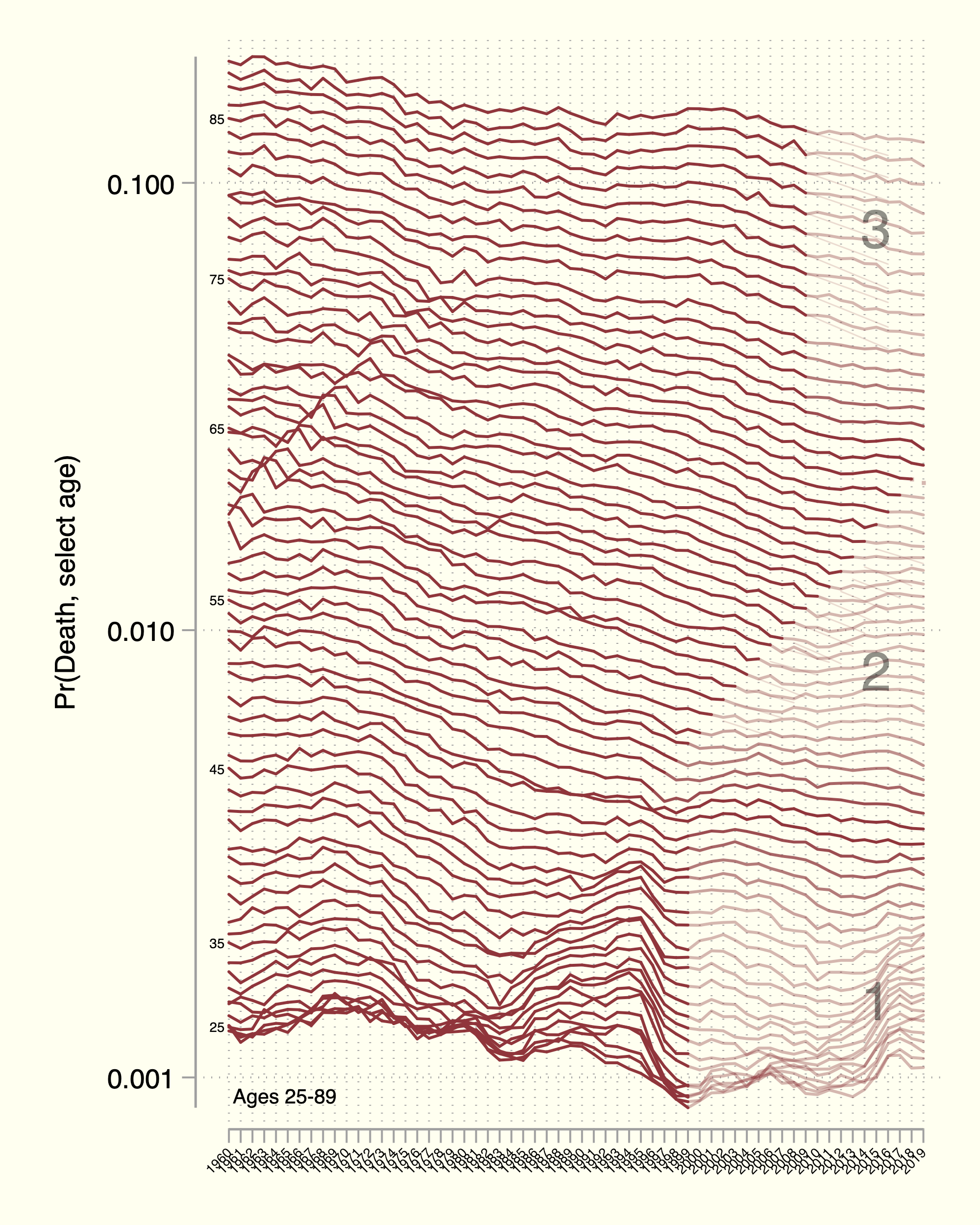Above: I show age-specific mortality rates over a long time horizon in order to illustrate three distinct patterns driving poor longevity in the United States in the 21st Century: (1) a well documented rise in deaths of despair; (2) a newly recognized cohort phenomenon; and (3) a slowdown that is most pronounced at elderly ages.
Working paper coming soon
Abstract
Life expectancy in the United States has stopped increasing, and it stopped increasing several years before the pandemic set in. Much has been written about the underlying problems, such as the opioid epidemic, but a full accounting of the departure from past trends and from other rich countries is incomplete. By simply plotting single-age mortality rates over a long period of time, I conclude that there are three distinct patterns unfolding in the 21st Century. In my view, the literature has not fully recognized all of them, leading researchers to conflate or mischaracterize the patterns that have been observed. The first pattern I identify, which is well understood, is the opioid epidemic and the “deaths of despair” that have tracked with it. The second, which has only recently been noticed but that I show weighs heavily on life expectancy, is an adverse cohort phenomenon with more mysterious roots. The third is a slowdown in progress that is most apparent at elderly ages. These results suggest that further research specifically into the cohort phenomenon could reap large returns, but acknowledging that there are three separate matters to address—each with distinct properties (but overlap in their affected populations)—could catalyze the ongoing search for causes more broadly.

